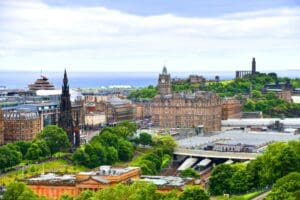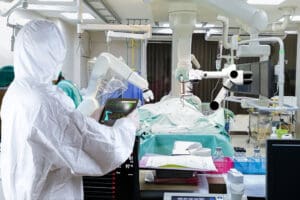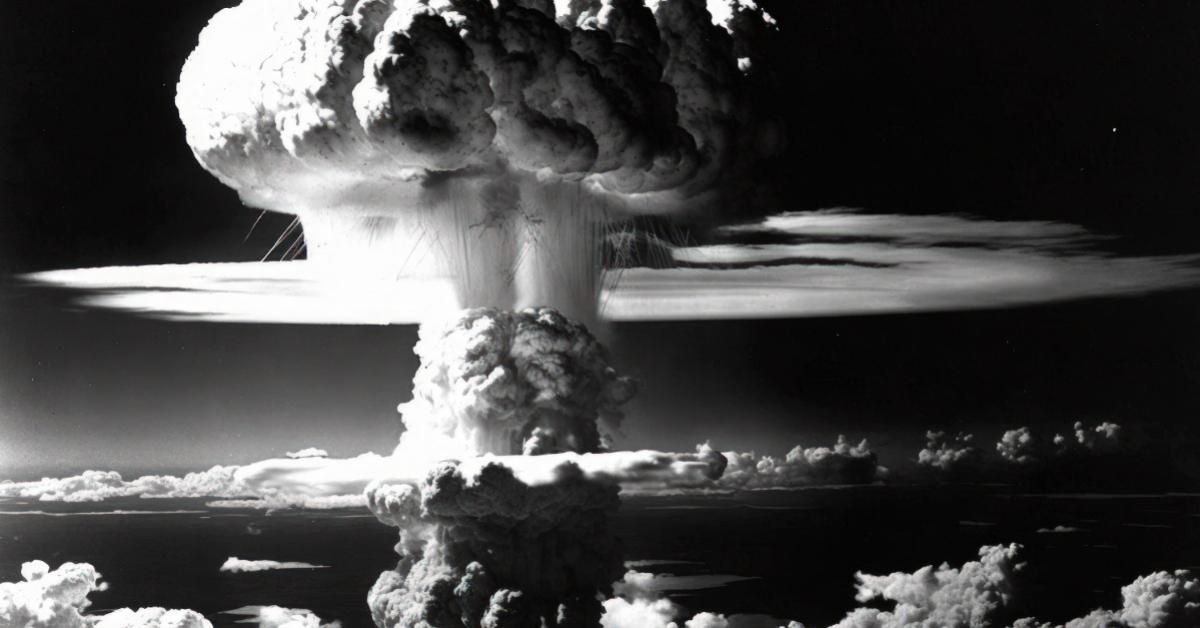How do you cover up an atomic bomb? The same way you cover up anything else: you don’t allow people to know what really happened. Of course, the magnitude and power of a mushroom cloud are plainly unmistakable. However, the effects of that bomb can be concealed and obfuscated from the general population.
For over a year after the nuclear destruction of Hiroshima and Nagasaki, the full extent of the bomb’s killing power was kept secret from the world. While little known today, the truth was only revealed due to the actions of a single war correspondent and the stories of six individuals who were forever scarred by what they saw.
On August 6, 1945, a nuclear weapon was used in war for the first time in history against the city of Hiroshima. Just hours after the bombing of Hiroshima, President Harry Truman made a radio broadcast to the world, announcing both the fate of the city as well as the United States’ possession of atomic bombs. Truman emphasized the power of these new weapons, stating that they had the explosive power of “twenty thousand tons of TNT.”
On August 9, the city of Nagasaki was the target of the second—and so far, last—use of nuclear weapons in history. Six days later, the Japanese surrendered.
Soon after the formal end to the war, four official investigative teams were sent into both cities to give a detailed report on the impact and aftermath of the bombings. When they arrived, what they discovered shocked them: even months after the bombs were dropped, people inside the cities were still dying. As Japanese doctors treated these patients in the aftermath of the bombings, they identified their symptoms as consistent with radiation poisoning. Overexposure to radiation was not a novel concept in the medical field, but the idea that radiation from the bomb would be a significant cause of death was never considered by the Americans.
The scientists of the Manhattan Project—who had developed the bomb—assumed that the initial explosion would kill everyone and that there would be nobody left alive to be affected by radiation. While thousands were killed in the blasts at Hiroshima and Nagasaki, thousands more would die from radiation burns in the following days, and thousands more from the aforementioned radiation poisoning in the coming weeks, months, and years.
Ultimately, the harrowing effects of radiation on the populations of Hiroshima and Nagasaki were downplayed in the official reports. This was likely done for the sake of PR. The United States was rapidly entering into a “cold war” with the Union of Soviet Socialist Republics (USSR), and it desperately wanted to portray itself as a moral crusader against the evil and godless Communists. If the horrific truth about the effect of nuclear weapons on Hiroshima and Nagasaki were made public, other nations—especially Japan—might not be so amicable toward the American sphere of influence. While there were some, especially in the upper echelons of military and political leadership, who were aware of the true scope of death the bombs had brought, it was considered highly verboten to discuss or mention it at all.
For over a year after the bombings, any information about Hiroshima and Nagasaki was heavily censored. Even though the Office of Censorship was shut down at the end of the war, the War Department released an official statement concerning the bombs saying, “It is the duty of every citizen, in the interest of national safety, to keep all discussion of this subject within the limits of information disclosed in official releases.”
Shortly after Douglas MacArthur established his interim government in Japan, both cities were cordoned off and any access to them was strictly limited. Even most Japanese citizens were unaware of the full scope of the bomb’s effects as the Japanese government admitted to little more than both cities’ destruction at the hands of a new and powerful weapon. The vast majority of Americans had assumed that the blast had killed everyone in a fraction of a second, and that was that. Truman’s allusion to the explosive power of the bombs certainly gave off that impression, if only implicitly.
In early 1946, a war correspondent named John Hersey was sent to Hiroshima on special assignment for the New Yorker. He started his career in journalism writing for Time Magazine in 1937 and spent the war years reporting from both the European and Asian fronts. During his time in Hiroshima, he interviewed numerous hibakusha—the Japanese term for survivors of the atomic bomb. He was shocked by what he heard and knew that the world needed to hear it as well.
When he returned to the United States, he compiled the stories he heard into a thirty thousand–word essay describing the bombing of Hiroshima and its aftermath from the perspective of six different survivors. The original plan was for the essay to be serialized, but the editors at the New Yorker decided to run it in its entirety, dedicating the entire August 31, 1946, issue to Hersey’s work—the first and only time the New Yorker has run as a single story. The name of the essay was simple, but it would soon be in the hands of readers all around the world: “Hiroshima.”
Hersey did not shy away from the graphic reality of the bombing as well as the chaotic aftermath for those still left alive. One particularly gut-wrenching account comes from the perspective of Reverend Kiyoshi Tanimoto, pastor of the Hiroshima Methodist Church. After surviving the blast and finding his family in rubble of the city, he tried to help the wounded around him on a boat to bring to an aid station:
Mr. Tanimoto found about twenty men and women on the sandspit. He drove the boat onto the bank and urged them to get aboard. They did not move and he realized that they were too weak to lift themselves. He reached down and took a woman by the hands, but her skin slipped off in huge, glove-like pieces. He was so sickened by this that he had to sit down for a moment. Then he got out into the water and, though a small man, lifted several of the men and women, who were naked, into his boat. Their backs and breasts were clammy, and he remembered uneasily what the great burns he had seen during the day had been like: yellow at first, then red and swollen, with the skin sloughed off, and finally, in the evening, suppurated and smelly. With the tide risen, his bamboo pole was now too short and he had to paddle most of the way across with it. On the other side, at a higher spit, he lifted the slimy living bodies out and carried them up the slope away from the tide. He had to keep consciously repeating to himself, “These are human beings.” It took him three trips to get them all across the river. When he had finished, he decided he had to have a rest, and he went back to the park.
All three hundred thousand copies of the August 31, 1946, edition of the New Yorker sold out instantly. People across the world were appalled by what they read. The experiences of these six individuals, although just a small portion of the city’s population, allowed an unsuspecting world to experience just a fraction of the suffering the bomb had caused. Before “Hiroshima,” the world had been in a state of blissful ignorance concerning the realities of nuclear weapons. That veil was now forcibly and irrevocably torn from their eyes.
Soon after its publication, “Hiroshima” would be turned into a book with the same title and instantly became a bestseller. Shockingly, the MacArthur government in Japan banned “Hiroshima” from being printed in the country. It was only three years later in 1949, when the article was translated in Japanese, that the government permitted its publication. The article was the first time many Japanese learned the truth about the sufferings that their countrymen had endured.
The legacy of Hersey’s “Hiroshima” is twofold. First, it demonstrated the true danger of nuclear weapons. The famous Bikini Atoll tests occurred just two months before Hersey’s publication, and the American people were now—for the first time—fully aware of the implications of entering the Atomic Age. In just a few years’ time, the USSR would be in possession of nuclear weapons of their own, inevitably resulting in a nuclear arms race between the two powers. The theoretical state of “mutually assured destruction” became a very present reality.
This represented the power of the pen against the censorship of the state. “Hiroshima” was one of the first times in American history that the government was exposed as being dishonest at best, and liars at worst. As Randolph Bourne once famously said, “War is the health of the state.”
The state is most empowered to wage war when it obfuscates the truth and prevents the population at large from understanding the consequences of its actions. When this truth is exposed, however, the crimes of the state can be brought into the light for all to see. What the story of John Hersey clearly illustrates is that an edifice of censorship, no matter how pervasive and powerful, can be brought down by just one person willing to expose lies and proclaim what is true.
























